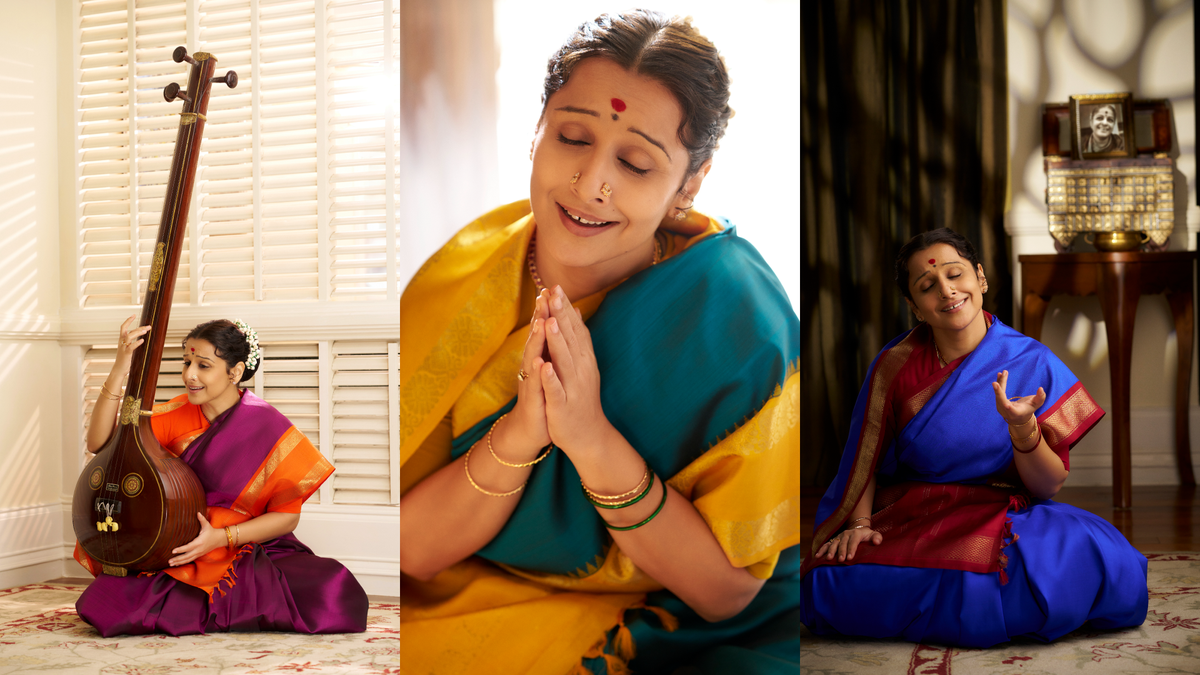In 1951, MS Subbulakshmi walked into Nalli Silks with a blue thread in her hand, hoping to get a sari of the same colour. The colour of the sari woven specially for her back then was so unique that it came to be known as MS Blue. Even today, people visit silk sari shops mentioning MS Blue, looking for the exact same shade of inky, iridescent blue.
To pay tribute to the legendary Carnatic singer, whose voice and sartorial sense have inspired generations, actress Vidya Balan has collaborated with Chennai-based costume designer Anu Parthasarathy for a photographic tribute to MS Subbulakshmi on her 108th birth anniversary. Anu Parthasarathy has worked in several films across languages.
Vidya says, “During my childhood, my mother used to play her song ‘Suprabhatham’ first thing in the morning. Even today, my daily life begins with her voice. For me, MS Subbulakshmi is a spiritual experience. So, this is a work of love and it is an honour to get a chance to pay tribute in this way.”
Anu Parthasarathy with Vidya Balan | Photo Credit: Special Arrangement
The idea for the project, titled A Recreation of Iconic Styles, began almost seven years ago. Recalling her creative journey, Anu said, “It came from a casual conversation with Vidya, where she was telling me that she would love to play the singer in the biopic if given the opportunity. I was also keen to do something different, and kept coming back to this conversation.” She had previously worked on Vidya’s costumes mazeAnd Teacher,
“I was able to visualise Vidya as MS’s Choti Amma and I started working on her look. They both have similar beautiful, pear-shaped faces. Vidya’s ability to play a character to the fullest also made her the ideal choice for the role,” she says.
Anu, who has met MS Subbulakshmi before, recalls being charmed by her grace and modesty. “Another thing that impressed me was how unique the drape of her sari was. It looked like a nine-yard sari but was actually six yards. All her saris were in traditional, bright colours and are iconic even today,” she says.
Though she began by looking at pictures available online and in books, Anu credits renowned flutist Mala Chandrasekhar, granddaughter of MS Subbulakshmi, for invaluable insight and guidance in the process of creating four distinct looks for the photographs captured by Rohan Pingle.
“For instance, many of the photographs were in black and white. But Mala madam helped me identify the right colours and shades for the sarees. I learnt from her that the singer used to wear sarees woven by Madurai weaver Muthu Chettiar in the early days and later started wearing sarees by Nalli Chinnasamy Chettiar,” she says.
This creative journey involved extensive research into the sarees that Anu wore in the sixties and seventies.
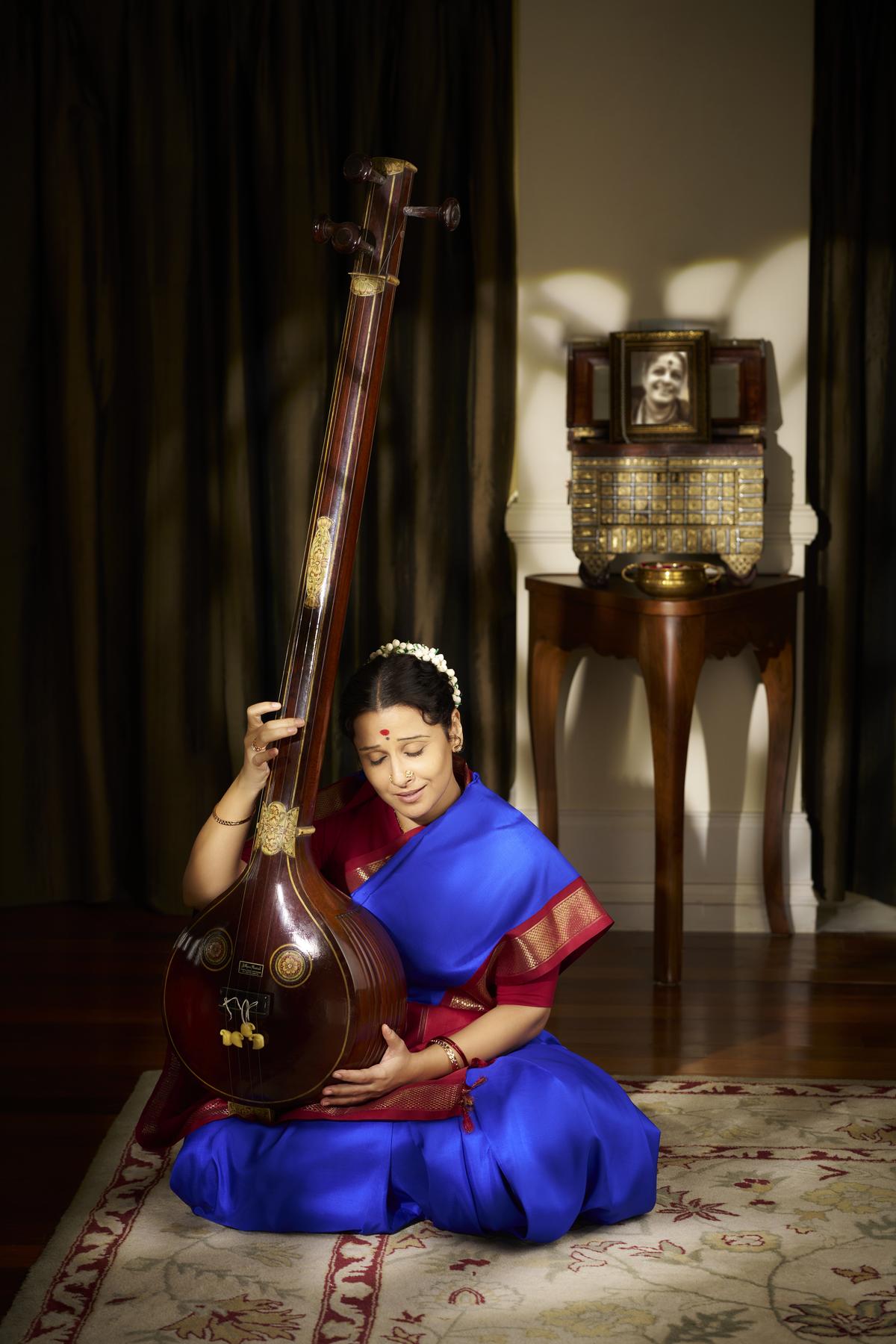
Vidya Balan as MS Subbulakshmi in the iconic MS Blue saree | Photo Credit: Rohan Pingle
Out of the many saris considered favourites, four saris were chosen for the photo tribute, each significant in its own way. The iconic MS Blue sari that Vidya wore was sourced from the original weaver Nalli Chinnasamy Chetty in Chennai. Despite being famous over the years, the uniqueness of the saris worn by the singer also meant that the custom route had to be taken to recreate it. Subhashini Srinivasan, proprietor and design head of S Studio Clothing, coordinated the weaving process of the three other saris, Anu says.
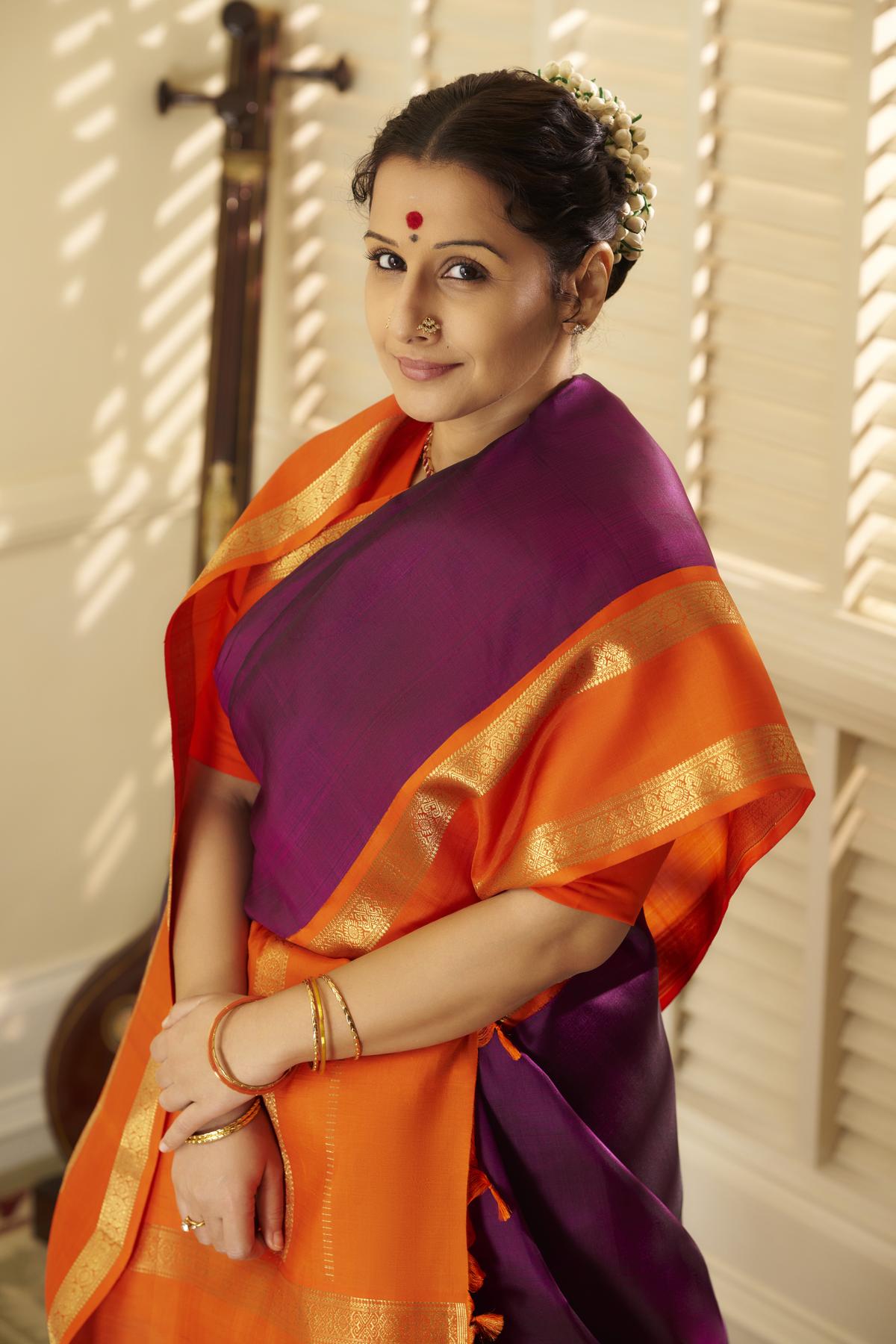
Recreation of the magenta sari with orange border worn by MS Subbulakshmi for The Music Academy Sadas in 1968 | Photo Credit: Rohan Pingle
A unique colour combination, the magenta saree with orange border was woven in the late sixties, and the singer wore it for Sadas at the Music Academy in Chennai in 1968, where she was honoured with the prestigious Sangeet Kalanidhi Award. For the entertainment series, the saree was woven by D Srinivasan of Sri Balavinayagar Silks in Kanchipuram.
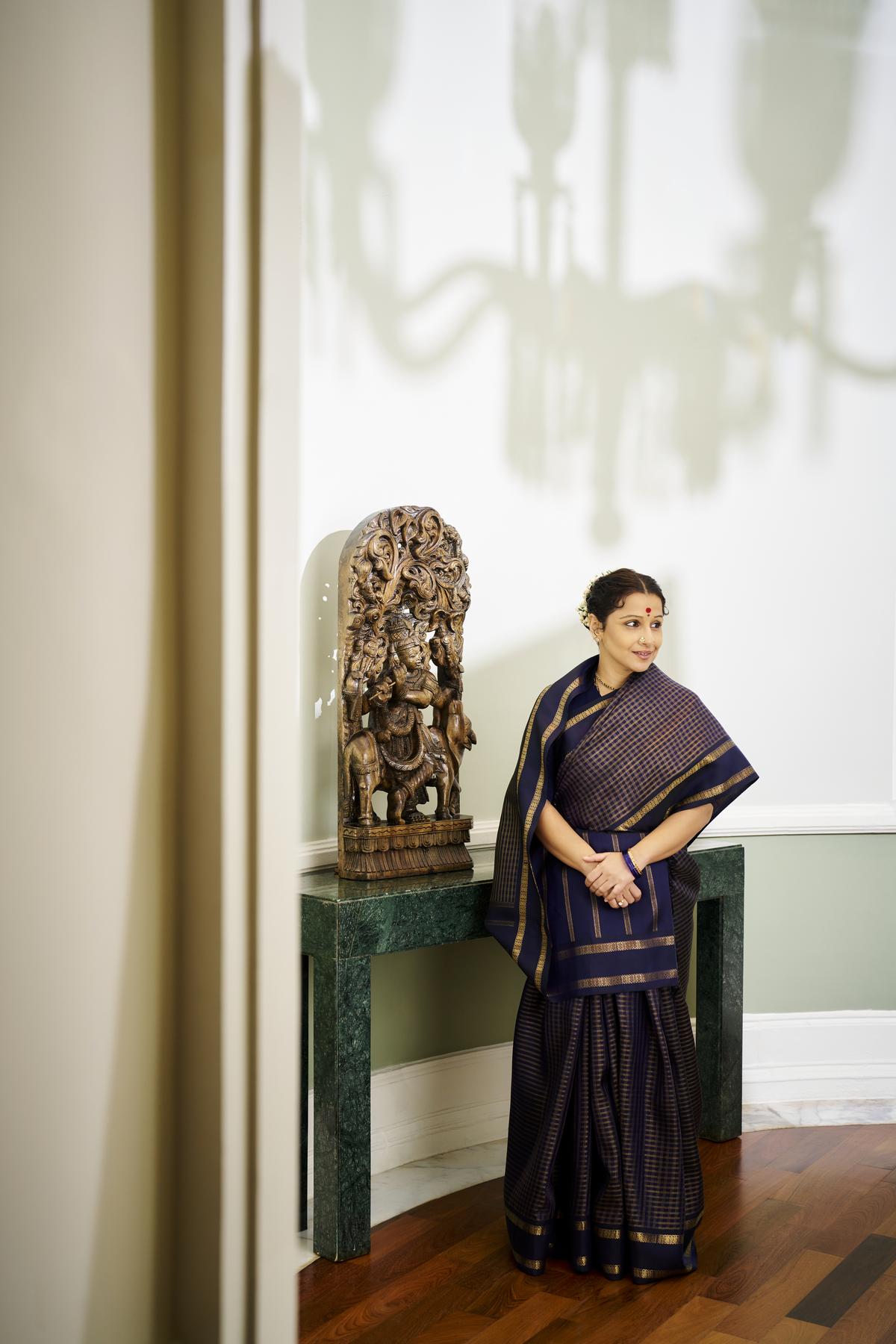
Vidya in a blue pearl square saree | Photo Credit: Rohan Pingle
The attractive blue pearl square saree (Muthu Kattam saree), as the name suggests, has square pieces of pearl on the body. “Unlike today’s sarees that have wide zari or multiple lines of zari on the border, the sarees of that era had a more simplistic style, which added to its appeal. It was a favourite saree for the concert,” Anu said about the saree, which was recreated by weaver V. Balakrishnan in Kanchipuram.
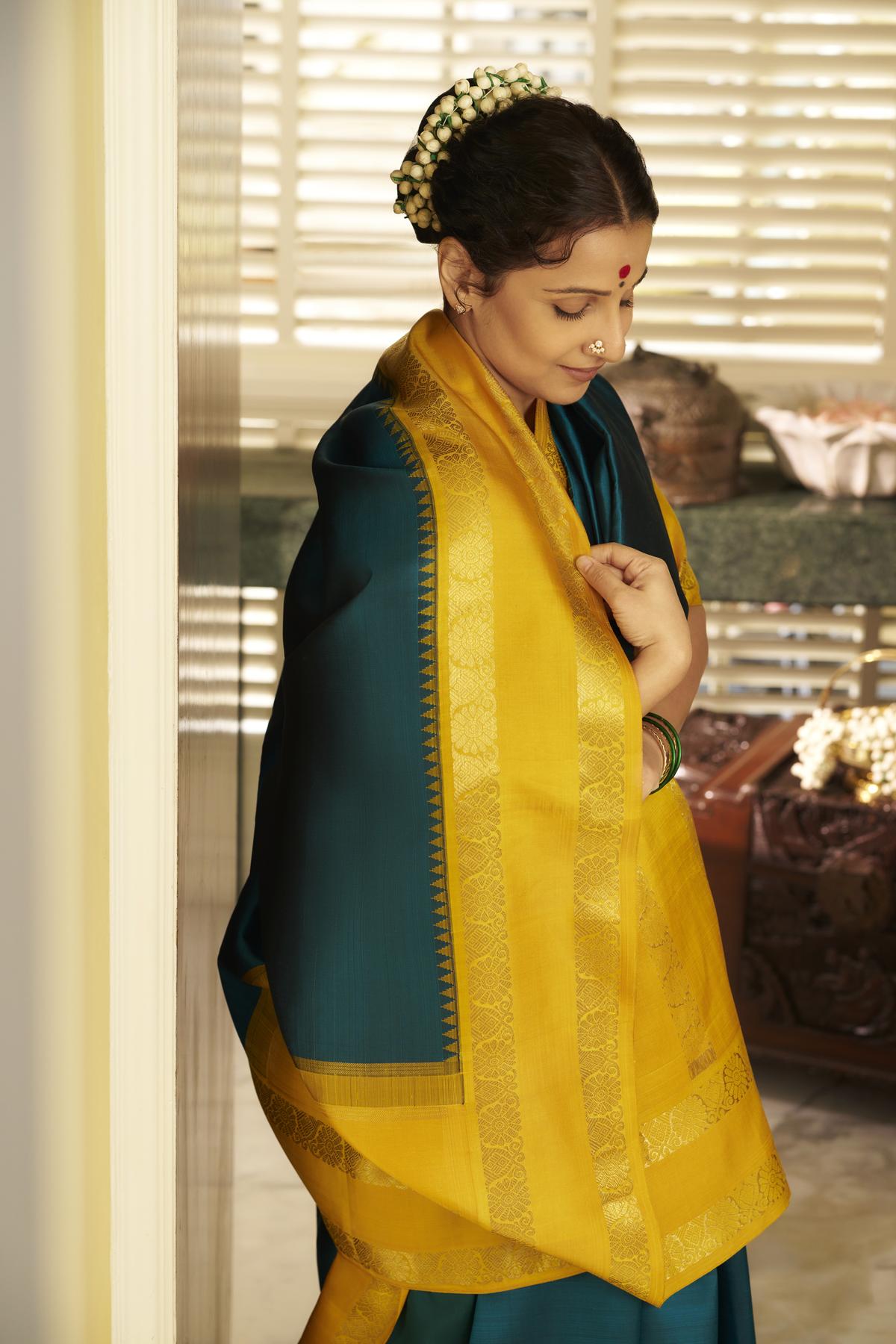
Ramar in a reinvention of the Green Saree | Photo Credit: Rohan Pingle
About the popular Ramar Pachai (green) sari with mustard yellow border, which was recreated by weaver D. Srinivasan, Anu recalls how much effort she had to put in to choose the right colour and had to go through many samples before settling on the right one. “Mala madam also had a similar silk cotton sari and she gave me a piece of fabric from it, which I used as a reference. It is also a popular colour, which you can hear being asked for in sari shops. The original sari had a striking dual combination of sea-green and mid-sea blue with a mustard oil border colour,” says Anu, adding that it required two weavers to run the loom simultaneously to achieve these contrasting colours.
From the size of the ring on her left ring finger, the much-loved mukuthi or nath worn on her nose, her flower-adorned bun and the perfect shade of kumkum on her forehead, were other aspects of her look that they worked on. Her simple accessories complimented the vibrant, sparkling saris she wore. “MS Subbulakshmi’s simple stage persona always shone through, and we had to keep this in mind while recreating her look,” says Anu.
The team that worked on the tribute said that the photographic tribute and Vidya’s portrayal of MS Subbulakshmi is not a mere superficial imitation but a deep appreciation of the singer’s artistry.
Published – September 16, 2024 12:50 pm IST
